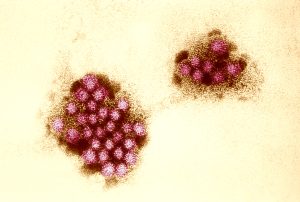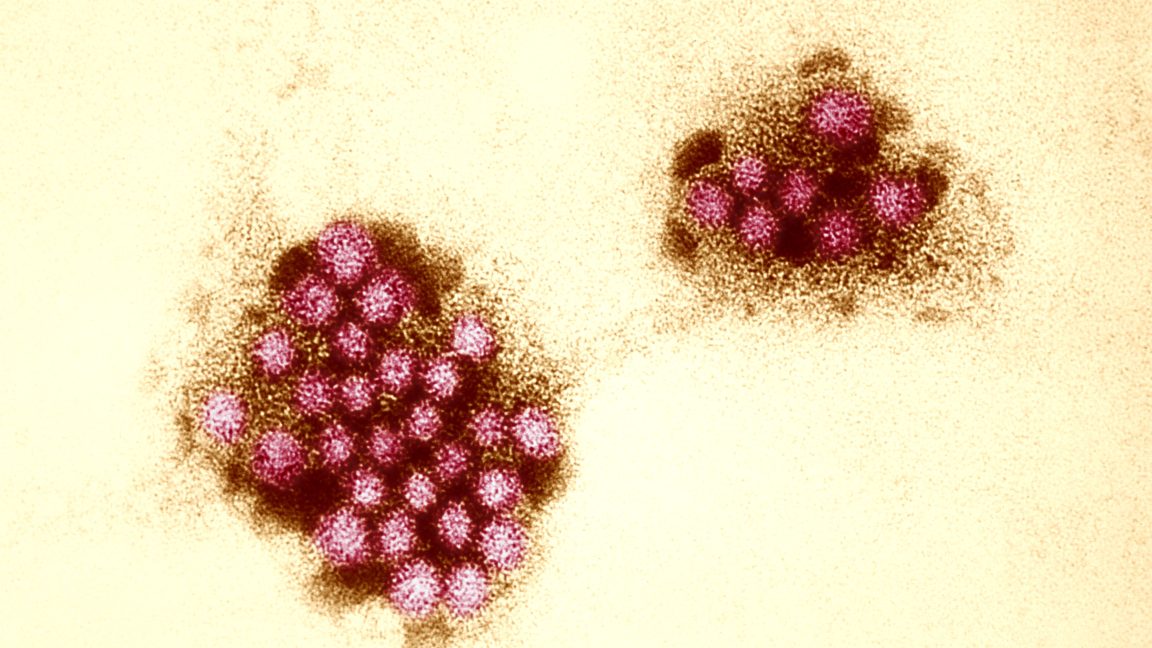In an early clinical trial, an experimental norovirus vaccine given as a pill produced defensive responses exactly where it counts—in the saliva of older people most vulnerable to the explosive stomach bug.
The results, published this week in Science Translational Medicine, are another step in the long effort to thwart the gruesome germ, which finds a way to violently hollow out innards wherever people go—from restaurants to natural wonders and even the high seas. It's a robust, extremely infectious virus that spreads via the nauseating fecal-oral route. Infected people spew billions of virus particles in their vomit and diarrhea, and shedding can last weeks. The particles aren't easily killed by hand sanitizers and can linger on surfaces for up to two weeks. Exposure to as few as 10 virus particles can spark an infection. According to the Centers for Disease Control and Prevention, norovirus causes an average of between 19 and 21 million cases of acute gastroenteritis in the US every year, leading to 109,000 hospitalizations and 900 deaths. This racks up an economic burden estimated to be $2 billion to $10.6 billion.
Vaccine design
For most, the gut-busting bug is miserable but usually over in a few days. But older people—especially those with underlying medical conditions—are vulnerable to severe outcomes. About 90 percent of people who die from a norovirus infection are people age 65 or older who live in long-term care facilities.
For this reason, researchers have aimed to design a vaccine that's sure to be effective in older people, who typically have weaker immune responses just from the aging process. But, of course, this makes the already daunting task of developing a vaccine yet harder—and norovirus poses some specific challenges. For one, there aren't a lot of good laboratory models and animal systems to run norovirus experiments or test candidate drugs. For example, healthy mice infected with a mouse version of norovirus don't develop any symptoms (lucky critters). Then there's the fact that norovirus isn't one virus; it's many. There are 49 different genotypes of norovirus, which have been categorized into 10 "genogroups." It's unclear if protection against one genotype or genogroup will help protect against the others, and if so, by how much.



 Loading comments...
Loading comments...
